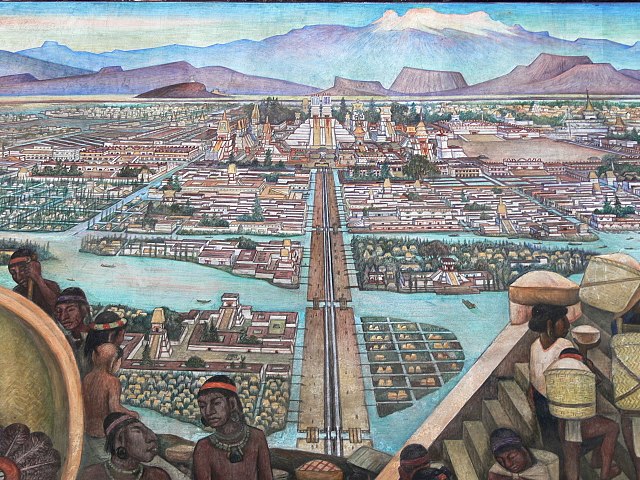Jorge González Camarena was a Mexican painter, muralist and sculptor. He is best known for his mural work, as part of the Mexican muralism movement, although his work is distinct from the main names associated with it. His major works include the mural on the main administration building of the Monterrey Institute of Technology and Higher Studies and a mural created for the Universidad de Concepción in Chile. He also created easel works, one of which, La Patria, was well known in Mexico as it was used on the cover of free textbooks from the 1960s into the 1970s. Recognitions for his work include the Premio Nacional de Arte, membership in the Academia de Artes and the Ordine al Merito della Repubblica Italiana, grade Commendatore from the Italian government.
Liberación mural in the Palacio de Bellas Artes
Mural work depicting Francis of Assisi San Buenaventura and Anthony of Padua in the Sala de Profundis of the cloister of the San Miguel Arcangel monastery in Huejotzingo, Puebla, Mexico
Historia de México (History of Mexico, Monterrey, 1954)
Presencia de América Latina (Presence of Latin America, Chile, 1964–65)
Mexican muralism refers to the art project initially funded by the Mexican government in the immediate wake of the Mexican Revolution (1910-1920) to depict visions of Mexico's past, present, and future, transforming the walls of many public buildings into didactic scenes designed to reshape Mexicans' understanding of the nation's history. The murals, large artworks painted onto the walls themselves had social, political, and historical messages. Beginning in the 1920s, the muralist project was headed by a group of artists known as "The Big Three" or "The Three Greats". This group was composed of Diego Rivera, José Clemente Orozco and David Alfaro Siqueiros. Although not as prominent as the Big Three, women also created murals in Mexico. From the 1920s to the 1970s, murals with nationalistic, social and political messages were created in many public settings such as chapels, schools, government buildings, and much more. The popularity of the Mexican muralist project started a tradition which continues to this day in Mexico; a tradition that has had a significant impact in other parts of the Americas, including the United States, where it served as inspiration for the Chicano art movement.

Mural by Diego Rivera showing the pre-Columbian Aztec city of Tenochtitlán. In the Palacio Nacional in Mexico City.
Mural from Bonampak
1903 broadsheet by José Guadalupe Posada
Eagle and snake image from the Colegio San Ildefonso project by Jean Charlot.








